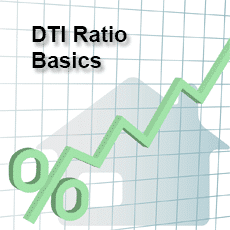 The Right Numbers To Make The Homeownership Team
The Right Numbers To Make The Homeownership Team
The process of purchasing your own home can seem like a major sporting event at times. If you have ever tracked baseball or football statistics then you have a little experience of what it is like to go through the application process and get pre-qualified and finally close on a home.
You are definitely going to feel like you are trying out for a team when you are facing the approval process with lenders. The key statistics that lenders will be looking at are the Debt To Income Ratios. There are two of them that really matter and you are going to be glad if you have been exercising some financial discipline in the period leading up to your home buying decision.
Lenders are willing to lend money secured by real estate as long as they are certain that they will be getting the monthly income that they expect. Since they have large numbers of borrowers they can make statistical predictions based on financial indicators as to who will make their payments and who might struggle. One of the most popular numbers that the will look to your debt to income ratio.
This percentage indicates what your obligations are each month in relation to your income. This tells the lender how much income is available for home loan payments and there are well-established limits that will determine if you will be considered as a safe income proposition. There are two ways the number is calculated and both figure into the lending decision.
Front End Ratios Measure Housing Expenses
The first metric compares the ratio of your pre-tax income to the mortgage payment. This is the front-end or housing expense ratio. It is calculated with the formula:
Annual Pre-Tax Income x 0.28 / 12 = Maximum Housing Expense Ratio
Back End Ratios Your Debt Repayments
The other metric for measuring debt to income is the back end ratio or total debt-to-income ratio. This will include all of the financial obligations that you have, including credit cards, loan payment, child support, and any Homeowner association fees. The maximum for this value is by the formula:
Annual Pre-Tax Income x 0.36 / 12 = Maximum Allowable Debt-To-Income Ratio
As long as your front-end and back end ratios are below the maximum amounts these numbers will not disqualify you from a home loan. There will be other important considerations in the lender’s decision such as your credit history and the cash you can put down at closing. However, your income will be scrutinized closely and two ways that will happen are through your front-end and back-end debt to income ratios.
In Summary
There are many aspects to consider when you are exploring the possibility of purchasing a home. One of the most important is the financial discipline that you practice in your life as a matter of habit. Lenders must rely on facts and figured in their lending decisions and the way that they evaluate your credit worthiness is by looking at published verifiable financial records and comparing them to how all of the other borrowers have behaved done in the past. You are on your way to home ownership when you can get your debt to income ratios within these well-established limits.


About The Author: Karengustin
More posts by karengustin